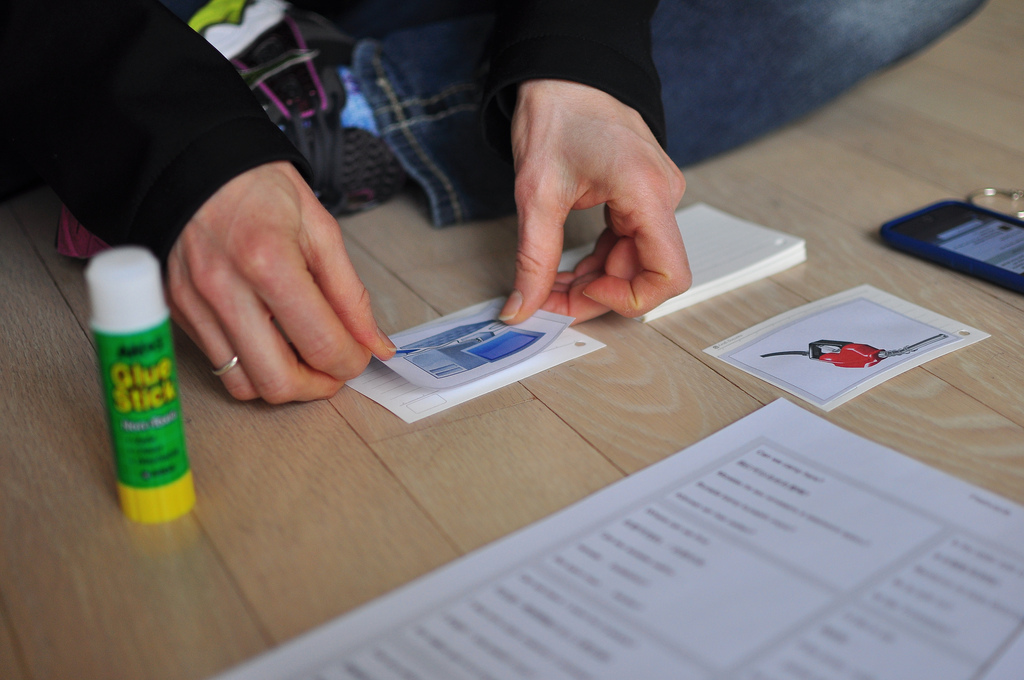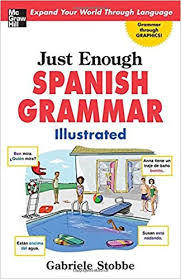5 Practical Tips for Adults to Learn Spanish Quickly

There’s a lot of debate as to the best ways adults can learn Spanish.
If you ask on language learning forums, you’ll find every answer possible. Immersion, books, apps, software, travel to a Spanish speaking country are all possible answers.
The truth is, there´s not a one size fits all answer that will work for everyone. We all have different learning styles and interests.
I found that the best way to learn Spanish is through a combination of methods.
Keep reading to see what those methods are and how you can use them in your learning.
1. Break up Your Learning
When I started to truly study Spanish, I found that it was easier to break up my learning. This applied to both the focus area and time.
You might be tempted to learn as much as you can all at once. That approach is OK, but there´s a high chance for burnout after a few weeks. There´s also a high chance that you won’t retain what you learned.
To reduce that chance, I found that it helped to create three focus areas of learning. They are:
- Pronunciation
- Grammar
- Vocabulary
Once I did this, it was much easier to focus during my study time. I knew exactly what I was going to use to practice in those three areas.
Scheduling Time to Study
That’s a nice segue to talk about scheduling time to study.
If you’re busy and find it hard to schedule an hour a day to learn Spanish, you can break up your learning into chunks during the day. This can work to your advantage.
The Serial/Position Effect is a theory that states it’s better to study in shorter sessions. Your mind can recall your studies in the beginning and the end. However, the brain generally doesn’t recall what’s studied in the middle.
For example, you can set your schedule to study for 30 minutes in the afternoon and in the evening. In the afternoon slot, you can study pronunciation. In the evening, you can focus on grammar. Then you can rotate your learning focus between study sessions.
2. Get Good Resources
You are a student of the Spanish Language. Having good resources to support your learning is indispensable.
These are study tips that I recommend for the different areas of learning.
Vocabulary
To learn vocabulary, you’re going to want to pick up a Spanish-English Dictionary. It’s very useful to have one handy to look up words as you hear more Spanish and become more curious.
I strongly recommend flash cards to study vocabulary. The best way to do flashcards requires time, index cards and a printer for images. Magazine images also work well.
First, make a list of words that you want to learn.
WordsGalore has this list of the 1000 most common words in Spanish. The list contains verbs, nouns, and prepositions.

Instead of writing the definition on the back, find images that will help you remember what that word means.
When you’re creating flash cards for nouns, it is essential to indicate if the verb is feminine or masculine. That will help you tremendously as you learn grammar. For the verbs, study the infinitive form, which means the verb isn’t conjugated. Examples of infinitives are cenar, estar and trabajar.
You’ll learn the conjugation in grammar and in pronunciation.
Pronunciation
When I was on my 90-day journey to learn Spanish, I have to admit that my pronunciation was pretty poor.
You can begin to learn pronunciation by reading detailed guides that explain how your mouth and tongue move as your forming the words.
I found that the best way to learn proper pronunciation is through feedback.
That’s where using an app like Speeching is very useful.
Rather than pronouncing words incorrectly and forming bad habits, Speechling’s coaches can give you instant feedback. Then you can practice some more and gain confidence as you start to have conversations in Spanish.
Grammar
Learning Spanish grammar is when you truly become a student of the language. It does require memorization, and you will need to use books to learn.
As important as learning grammar is, it can be a drag if you’re using a book that bores you.
When was the last time you’ve studied grammar? If it’s been a while, start with something simple.
I used the book "Just Enough Grammar Illustrated" by Gabriele Stobbe.

It’s written for teenagers, and the fact that it’s illustrated made it easier to remember the parts of speech beyond verbs nouns and adjectives.
You’ll work through that book pretty quickly since it’s a refresher. Then work your way up to another book that might be more challenging. You could try "Spanish Grammar Made Easy," which is a great book for learning Spanish.
3. Speak Spanish Regularly
If you’ve been following along, you’ll know that I’ve been on a 90-day journey to learn Spanish. I started at a beginner level. The best way to get out of the classroom of your mind is to get out and put what you’ve learned into practice.
It can be scary and exciting at the same time as you’re practicing and learning and making mistakes. Just remember it’s all part of the learning process.
Here are a few ways you can start to speak Spanish regularly.
Find People to Speak Spanish With
Meetups are a great way to meet new people who share a common interest. In quite a few areas, you’ll be able to find Conversational Spanish meetups that are for any level.

You can also practice with relatives and friends. If you have Spanish-speaking friends, tell them you’re trying to learn Spanish and you’d like to practice in conversation.
Spend an Extended Amount of Time in a Spanish Speaking Country
For some people, total immersion is the only way to learn a language.
Even though I live in Spain, the immersion only method isn’t as easy as it seems.
I’ve had days when my confidence was sky high or very low. On the days when it was high, I’d just go out and have conversations. On days where it’s low, I’d find an environment where I felt it was OK to make mistakes. It could be at home, or in conversation with friends.
If you do opt for the immersion method, remember that you’ll have good days and bad days. Take it all in stride and keep learning and improving.
4. Be a Consumer of Spanish Media
I encourage you to find fun ways to reinforce your learning. In this case, your opportunities are endless. You can read Spanish newspapers, listen to radio stations and watch YouTube videos.
Another way to learn is to watch your favorite movies and TV shows in Spanish with Spanish subtitles.
Subtitles help you tie together listening and reading vocabulary words. When you hear Spanish in real time, it can be very hard to keep up and understand what’s being said.
As you learn vocabulary and pronunciation, you’ll start to pick out words in conversation. Subtitles help you connect the dots more quickly.
For example, Netflix movies can be viewed in Spanish with subtitles. You can also find Spanish versions of popular American TV shows.
Here in Spain, my favorite TV shows MasterChef Espana and LaVoz
You might already know them as MasterChef and The Voice.
5. Be Consistent & Accountable
This is a two-for-one tip, but one of the most useful for busy adults.
In my day job, I’m a fitness coach. I see the same behavior patterns in getting fit are the same as in learning a new language.
Consistent actions over an extended period of time brings results.
The problem is that it’s hard to be consistent over an extended period of time.
Most people will start strong and then a few weeks later they stop. What happens is that as much as we’d like to change, our unconscious minds don’t like it very much. We start to create other “Priorities.”
The best advice I can give in this circumstance is to remember why you’re learning. Make sure it’s the strongest why you can imagine.
Here’s an example: Write down a future situation where you’re sitting on the beach, relaxing and impressing the locals. They think that you’re from the area.
You can use any situation that’s personal to you and makes you smile.
When you’re having a moment where you don’t feel like it, read what you wrote.
To be accountable, tell someone what you’re doing and what your goals are. Ask them to check in with you every week to see how you’re getting on. Or better yet, ask them to study and learn with you.
What Are Your Next Steps to Learn Spanish?
Ultimately, it’s up to you to take the initiative and learn Spanish. There are a ton of resources out there, and it’s easy to get overwhelmed.
Set time aside in your schedule by booking appointments with yourself in your calendar. Pick one focus area and start there. As you gain confidence, add another focus area.
With structure and consistency, you will learn Spanish quickly and easily.